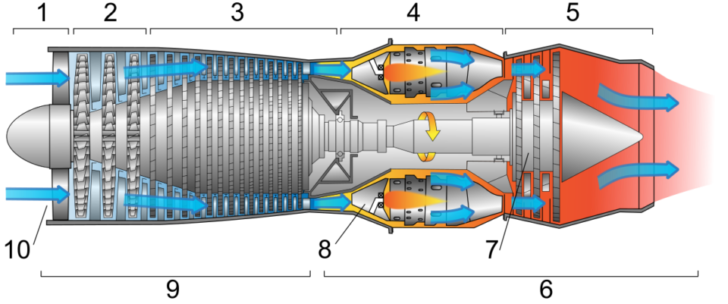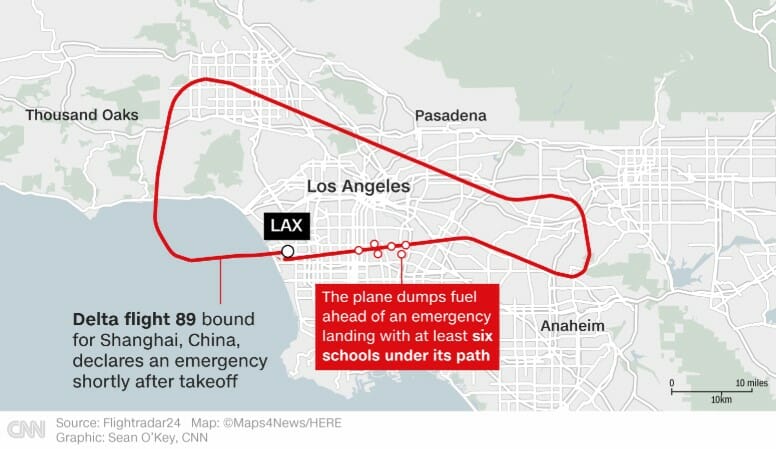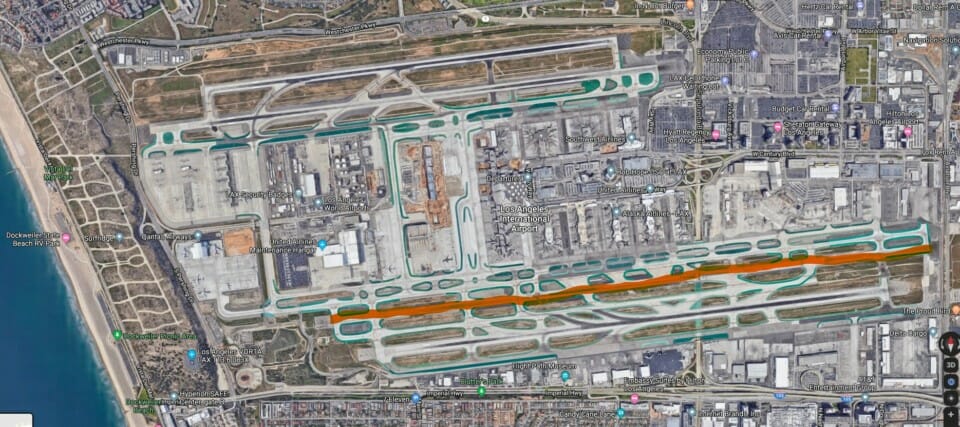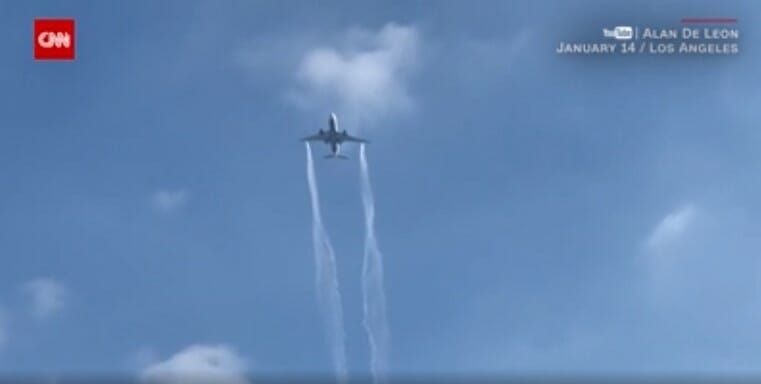On Tuesday, Delta flight 89 departing from Los Angeles International Airport (LAX) to Shanghai, China encountered a compressor stall during climbout at 8,000 feet.
What Is A Compressor Stall?
The core of a jet engine consists of:
- Compressor fan,
- Low-pressure compressor stages,
- High- pressure compressor stages,
- Burner cans where the fuel is burned,
- Exhaust turbine stages.

The jet engine compressors ambient air to a high pressure, burns the air to further increase pressure and expels this as thrust through the exhaust. All of the compressor and turbine disks are connected to a shaft. The shaft is driven by the thrust passing through the exhaust turbine.
When airflow is disrupted going through the compressor stages, it produces a power anomaly called a compressor stall. When this happens, the pilot will reduce thrust until the compressor stall ceases. If it doesn’t cease, the engine will require a shutdown.
What Happened During Climb
This flight (DL89) departed westbound on runway 24 Left and within seconds was climbing over the Pacific Ocean. As the aircraft, a Boeing 777-200 was passing 8,000 feet, it encountered a compressor stall. The pilots had the aircraft under control meaning that they were able to maintain speed and altitude. The pilots requested a return to LAX but they never declared an inflight emergency. They were able to maintain an altitude of 8,000 feet and a speed of 330 knots so they were flying under control.

In my opinion as a pilot, they should have declared an inflight emergency for two reasons:
- They would have one dedicated controller handling this flight and
- They wouldn’t have been the communications confusion between DL89 and SoCal Departure (ATC).
In brief, DL 89 requested a vector back to LAX for landing on runway 25 Right which is the longest runway available for landing at 12,000 feet. ATC approved their request but there was confusion between air traffic controllers on which runway DL 89 wanted to use.

The Fuel Dump
There are two critical aircraft weights that affect takeoff and landing. They are:
- Maximum takeoff weight (MTOW) is the maximum weight for takeoff considering runway length, air temperature and runway altitude.
- Maximum landing weight (MLW) is the maximum weight that the landing gear can sustain during touchdown on the runway.
Dumping fuel is necessary to decrease the aircraft weight so it will not exceed the maximum landing weight. Aircraft that are not equipped with a fuel dump will have to continue flying until maximum landing weight is achieved. For this flight, dumping fuel over the Pacific Ocean at an altitude above 6,000 feet is what is required. At this altitude, the fuel usually dissipates before it can hit the ground.
Here’s the problem, DL89 was asked several times by ATC if they needed to dump fuel. Each time, DL 89 responded – negative. I have to make clear that the pilots were busy monitoring the engine problem, communicating with ATC and getting into an extremely busy landing pattern at LAX. They also had to calculate the airspeed they would need on final approach. They may have forgotten to dump fuel until final approach due to an extreme cockpit workload.
Here is one of the radio conversations regarding whether a fuel dump was required:
Six Los Angeles Schools Were Affected
During final approach, DL89 passed over one high school and five elementary schools. Sixty students that were outside were affected by the non-approved fuel dump. Los Angeles Fire Department responders were able to treat the students with soap and water. Thankfully, none of these students required hospitalization. These students had to change their clothes and wore treatment gowns.
The Video Of DL 89 Flight Path
Juan Brown discusses the issues of this flight as the ATC communications and flight paths are presented in his video. Juan does an excellent job of explaining what happened and why the situation could have been handled better with clearer communications between DL 89 and ATC.
My Take On What Happened
I am not going to second-guess the pilots of DL 89. An inflight emergency, especially during takeoff, is quite intensive. There are things to monitor, checklists to complete, communications with ATC and decisions to be made, all in a short period of time. Thankfully the aircraft landed safely with no injuries, this flight was a success.
As a pilot, I have declared an inflight emergency. When you formally declare an inflight emergency, you get a dedicated air traffic controller that only handles your flight. In my opinion, the captain should have declared an inflight emergency which would have reduced some of his workload by not having to explain over and over to succeeding controller on which runway was requested for landing.




